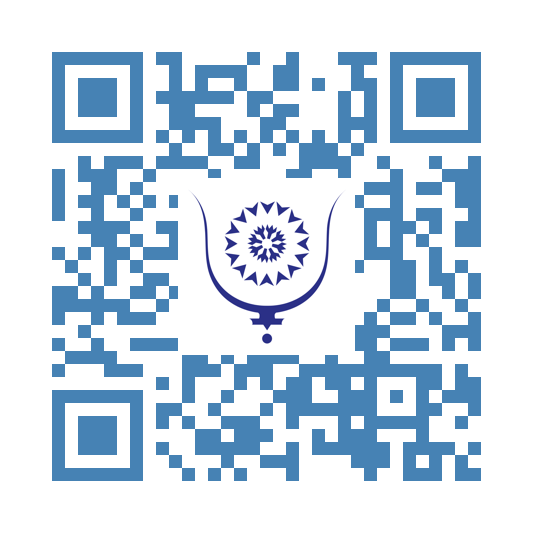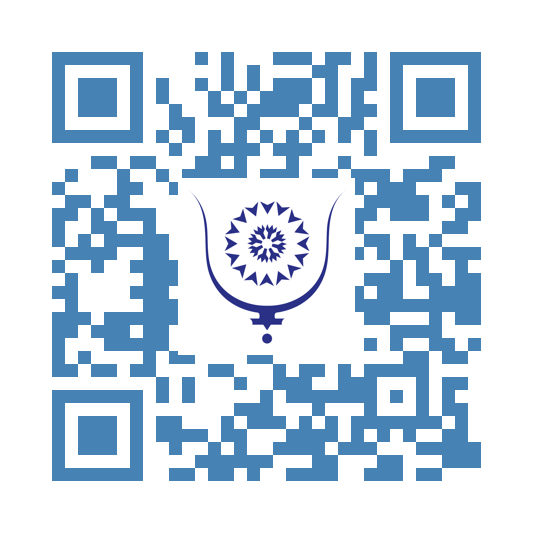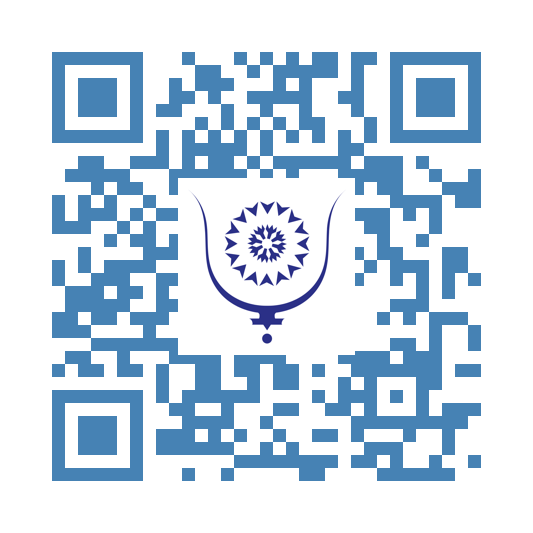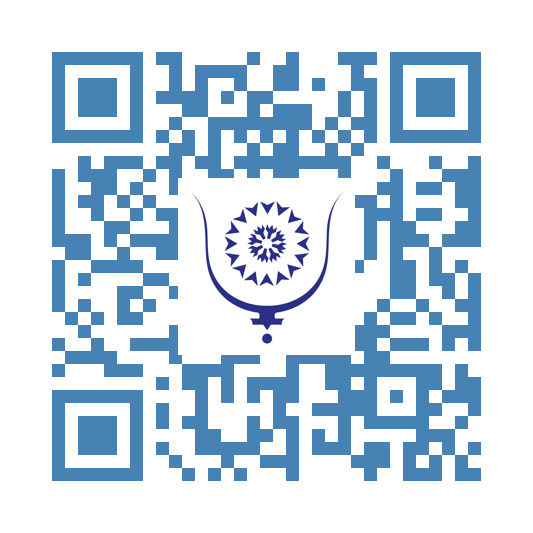The Seven Chakras: A Metaphysical Anatomy of the Soul
529
Throughout the ages, esoteric traditions, yogic sciences, and mystical philosophies have described the human being as more than flesh and bone—as an energetic organism with subtle centers of power, perception, and spiritual potential. Among these systems, the doctrine of the seven chakras stands as one of the most refined and symbolically rich models of inner transformation. These chakras—meaning “wheels” in Sanskrit—are vortexes of energy located along the body axis, each responsible for specific aspects of consciousness, physiology, and spiritual evolution. From the densest energies of survival to the most ethereal states of divine union, the chakras form a ladder of ascent, guiding the soul towards enlightenment.
The Root Chakra (Muladhara), located at the base of the spine, is the foundation of the entire energetic system. It governs physical survival, grounding, and the instinct for self-preservation. Associated with the element earth, it links the individual to the material world and the ancestral lineage. When balanced, it grants stability, trust, and a strong connection to one's body and environment. When blocked or deficient, it manifests as fear, insecurity, or disconnection from the physical plane. Spiritually, Muladhara represents the coiled energy of potential—the kundalini—awaiting its ascent through the higher centers.
The Sacral Chakra (Svadhisthana), situated just below the navel, is linked to creativity, sexuality, and emotional fluidity. Associated with the element water, it reflects the soul's capacity to feel, to relate, and to generate life—physically, artistically, or spiritually. It is the seat of desire, pleasure, and procreation, and its energy is relational, connecting the self to others through intimacy and shared experience. When in harmony, it allows the free expression of emotion and creative force. When imbalanced, it may result in emotional instability, guilt, or addictive tendencies. Svadhisthana is where passion and refinement meet.
The Solar Plexus Chakra (Manipura) is the center of personal power, will, and self-definition. Aligned with the element fire, it is related to transformation, ambition, and the assertion of the individual will. It is through Manipura that one develops a clear sense of identity and the strength to act upon purpose. When balanced, this chakra radiates confidence, motivation, and integrity. An excess may produce domination or pride, while deficiency results in passivity or low self-worth. Spiritually, Manipura is the alchemical forge where ego begins to be disciplined and transmuted into conscious intention.
The Heart Chakra (Anahata) is the gateway between the lower and upper chakras, and the center of unconditional love, compassion, and spiritual empathy. Associated with the element air, it expands the sense of self to include others, fostering connection, forgiveness, and inner peace. An open Anahata transcends personal desire and embraces unity, allowing one to love without attachment and to serve without self-interest. Imbalances may manifest as emotional coldness, grief, or over-dependence. Spiritually, this chakra is the sacred rose of divine love, unfolding toward the eternal.
The Throat Chakra (Vishuddha) governs expression, communication, and the power of the word. Linked to the element ether (or sound), it represents the capacity to speak truth and to manifest thought into form through language. It is also the seat of inner listening and alignment between inner truth and outer expression. When open and balanced, Vishuddha enables authentic speech and artistic expression. When blocked, it may result in silence, dishonesty, or miscommunication. At the spiritual level, it is through this center that the magician, mystic, or initiate learns to wield the sacred word—the logos—as an instrument of transformation.
The Third Eye Chakra (Ajna), positioned between the eyebrows, is the seat of inner vision, intuition, and higher perception. It transcends rational analysis and opens the gates to symbolic insight, dreams, and clairvoyant awareness. Associated with the light element or pure mind, it integrates the polarities of logic and imagination, allowing one to perceive patterns, archetypes, and spiritual truths. A balanced Ajna chakra produces clarity, insight, and an awakened inner compass. Imbalance may cause delusion, fantasy, or disconnection from reality. Mystically, Ajna is the eye of the soul, through which one perceives the invisible architecture of the cosmos.
The Crown Chakra (Sahasrara), located at the top of the head, is the highest center of consciousness, representing union with the Divine, cosmic intelligence, and spiritual liberation. Unlike the other chakras, Sahasrara is not governed by an element but by pure consciousness—chit—itself. It is symbolized by a thousand-petaled lotus, forever unfolding into infinity. When this chakra is fully awakened, the individual transcends ego and merges with universal will, experiencing profound bliss, silence, and liberation. Imbalances may manifest as spiritual disconnection, nihilism, or excessive intellectualism. At its highest vibration, Sahasrara is not a center of power but a doorway to the return to the Source.
Together, the seven chakras form a living mandala of human potential. They are not merely energetic centers but evolutionary thresholds, each inviting the soul to purify, awaken, and integrate aspects of the self on its path toward unity with the divine. When harmonized, these chakras become a ladder of light—a sacred ascent from survival to transcendence, from matter to spirit. The awakening of the chakras is thus not an end in itself, but a means of returning to wholeness, where the human becomes a conscious expression of the infinite.
Share:
The Seven Chakras: A Metaphysical Anatomy of the Soul
copy:
https://bluwr.com/p/323058346
Genesis...
3135
I greatly enjoy looking out windows, any windows. Windows have always offered me a picture of life. A picture that constantly changes, a picture that I alone see before it disappears forever. Maybe that is where my taste for the ephemeral comes from. It is my only certainty.
What I am also sure of is that it comes from the fact that as a baby and young child, my mother would place me by the window where I would hold onto a grille. An opportunity to be both inside and outside at the same time and to let her go about her many responsibilities as a housewife. It was a traditional Moroccan grille, typical of ours. Today, I have reused that same grille design on the windows and balconies of my house.
I have in fact remained my mother’s eternal child, no doubt like we all remain so, but probably differently, otherwise, uniquely.
The window is an escape from the cramped space of the house. In fact, all houses are cramped. The house, paradoxically despite its smallness, is a space of freedom, intimacy, and security. It is also a space that distances the horizon and makes it sublime. The window allowed me to raise my head and look far. As far as this window allowed me to see.
The house cultivates the dream; the window waters it.
On the evening my mother passed away, I stood by the window. It seemed to me I heard her voice again speaking from afar to reassure me. My mother loved me very much. She did not say it, but made me feel it through the tone of her voice, her gaze, and a slight smile at the corner of her lips. A smile she had a special secret to. My mother’s smile was genetic. I clearly saw she inherited it from my grandmother—Cherifa Lalla Zhour had the same smile.
My mother was not expansive.
She extended her love to my children later, and I felt it. I was her eldest, her first female experience, her first pains, her first childbirth, the first baby cry to her ears.
I owe my mother much: the sensation of a pencil in hand, the touch of the softness of paper before writing on it, the taste for reading and the pleasure of manual work.
My mother was among the first classes of the modern school in Fès. My maternal grandfather, Si Ahmed Ben Ali, had the wisdom to send her to school against the opinion of people at the time—family, neighbors, and onlookers. She traveled a long distance from Saqaet El Abbassyine to her school. It was in Fès j’did, a neighborhood of great nationalists, intellectuals, artists, and state clerks: Bahnini, Benbouchta, Moulay Ahmed El Alaoui, Ahmed Chajai, and many others. It is the stronghold of Wydad of Fès.
I have many wonderful memories of Saqaet El Abbassyine. From time to time, I go for a walk there to recharge myself. The dilapidation of Bab Riafa, the sad passage by Lalla Ghriba to reach Saqaet El Abbassyine, the continuation by Sidi Hmama to arrive at Qobt Assouk, saddens me every time. So, to soothe my pain and sorrow, I go and sit at Bab Boujloud to enjoy a good glass of tea prepared in a traditional samovar, under the famous mulberry tree.
The magic of Fès is unmatched.
My father, on the other hand, was affection in the absolute. The exemplary man. The man who forged my pride and committed my life to serving the country. Moroccan at heart, attached to the land of his ancestors. Proud to have been an active nationalist against the protectorate. He spoke of his people’s struggle against French soldiers. He kept fresh memories of the fights of Bou Gafer and the brave battle of his people. He was happy to have served his country but also disappointed with the evolution of some things. He said that we were losing our soul with the decline of our attachment to ancestral values; remembered by all the families of old Rabat who still recall him for having treated their children and eased their pains. He passed away certain that Morocco could have done better.
He remained attached to his parents and adored them, attached to his native land that he visited every year, attached to his people to whom he offered land to expand the Sidi Daoud cemetery, his forever village, today swallowed by a soulless Ouarzazate. I am not surprised. My father is a direct descendant of Sidi Daoud, a Sufi Sheikh and great scholar who left many works including the famous *Oumahat Al Wataeq, Al Mountafaa Bih Fi Anawazil*.
My father loved Rabat and its beach. It was there he saw the sea for the first time in his life, coming from the other side of the Great Atlas, which climate change is now altering.
It was at the Rabat beach that he learned to swim.
Today, his grave overlooks that beautiful beach and ocean. His resting place is bathed in the sea air that blows continuously over the hilltop, the final abode of thousands of souls at rest, of lives both rich and less rich, and of memories forever lost. The cemetery tells a lot about the place we give to our dead, and it does not speak well of us.
So, like my brothers and sisters—Jalil, Moughni, Rajae, Atika, Abdelmoutaleb, Elhoussein, Soumaya, I am a kind of accident of nature. A father from Ouarzazate marrying a girl from Fès; that was rare. It was 1950.
The maternity hospital where my lungs filled for the first time with air and where I cried out announcing my coming to life is still there. It was Tuesday, 11:37 am, May 15, 1951. Each time I pass by, something brings me back to memories I have created from my mother's stories. I see again her pride and my father's joy at my birth.
By chance, on the way to bury my mother, and years later my father, we passed along the Almohad wall. The historic maternity hospital of Rabat is just behind. The circle was thus completed.
My mother's name was Lalla Amina Makhloufi and my father’s Ahmed Belhoucine El Ouarzazi. The civil registry attendant gave him the surname Daouda, probably because he was born in Sidi Daoud or simply because that person had been influenced by a stay in sub-Saharan Africa...
Share:
Genesis...
copy:
https://bluwr.com/p/318522084
Stray dogs and cats: a growing challenge for public health and urban peace in Morocco...
5771
The proliferation of stray dogs and cats in the streets raises major challenges for urban quality of life and even more so for public health. As their numbers increase exponentially, the consequences are multiple: noise nuisances, risk of accidents, spread of diseases, and a sense of insecurity for many citizens.
A notable aspect of this issue is the significant difference between the social perception of cats and stray dogs. Cats, often perceived as less aggressive, are generally not considered harmful. They are abundantly fed in public spaces by individuals, sometimes due to so-called religious beliefs. According to some, Muslims should show compassion towards cats, which would explain a certain social tolerance towards them. They thus benefit from some benevolence and are extremely numerous, living and multiplying in public spaces without being disturbed; on the contrary, shelters are often provided to help female cats give birth peacefully.
In contrast, stray dogs do not receive the same treatment. Many people suffer from cynophobia (fear of dogs), a quasi-cultural phenomenon. More often perceived as a threat, especially because of their ability to attack, they are generally criticized. This negative image has been reinforced following several serious incidents in recent years: violent attacks resulting in serious, even fatal injuries have marked public opinion and increased concerns.
The massive presence of these stray animals has direct repercussions on public health. The absence of veterinary control and regular sanitary interventions promotes the spread of diseases transmissible to humans. Stray dogs and cats can carry highly contagious and serious diseases. This issue is even more worrying in dense urban areas where contact between animals and humans is frequent. Children, in particular, are especially vulnerable to bites or scratches, as well as to the infections that may result.
The health risk is therefore extremely concerning, especially since many diseases can be transmitted to humans.
1. Rabies: a deadly viral disease mainly transmitted by the bite or scratch of an infected dog. It remains a major public health problem in several regions despite vaccination campaigns. Nearly 400 cases and 20 deaths are recorded each year. Four recent death cases have been widely reported.
2. Toxoplasmosis: an infection caused by the parasite Toxoplasma gondii, transmitted by contact with contaminated cat feces, notably via litter. Generally mild, it poses a serious risk for pregnant women, potentially causing fetal malformations.
3. Leptospirosis: a bacterial disease transmitted by the urine of infected dogs, which can cause serious infections in humans. Between 2005 and 2017, 372 cases were declared with a mortality rate of 17.7%. 52.2% of cases occurred in urban areas.
4. Leishmaniasis: a serious parasitic disease transmitted by stray dogs, which are reservoirs of this parasite. Nearly 2,000 cases per year.
5. External and internal parasites: fleas, ticks, intestinal worms, which can also infect other animals.
6. Cat scratch disease: caused by the bacterium Bartonella henselae. It causes fever, swollen lymph nodes, and fatigue, especially in children and immunocompromised people.
7. Ringworm: a contagious fungal infection through contact with the fur or environment of infected cats, causing distressing skin lesions.
8. Pasteurellosis: a bacterial infection transmitted by bite or scratch, caused by Pasteurella multocida, which can cause local pain and inflammation.
9. Echinococcosis: a parasitic disease related to intestinal worms developed in cats, which can severely affect the human liver and lungs.
10. Mange and other parasitic infections: transmitted by direct contact with affected stray cats.
Strict sanitary management is therefore necessary, including vaccination, sterilization, and responsible handling of this animal population in urban areas.
Beyond health risks, stray animals cause nuisances in streets and residential neighborhoods. Nocturnal barking disturbs residents' sleep, while droppings in public spaces degrade cleanliness and the image of cities.
Facing this complex situation, several approaches can be considered. It is crucial to develop awareness campaigns to encourage citizens to adopt responsible behaviors, especially regarding food given to stray animals. Special emphasis should be placed on sterilization to control reproduction.
Moreover, implementing integrated public policies combining capture, veterinary care, and relocation of stray animals appears essential. These measures must respect the cultural and religious sensitivities of the country, notably involving religious authorities in creating harmonious responses. A fundamental effort towards creating dedicated spaces—shelters and controlled feeding points—could channel animal presence and reduce conflicts with the population.
Moroccan NGOs published an open letter addressed as a last resort to His Majesty the King on August 3rd, reacting to extermination campaigns led by some local authorities:* "We have exhausted all institutional channels without finding attentive ears among the authorities concerned," *they say, describing the methods used as "cruel,*" contradicting " *the values of compassion promoted by religion and the monarchy." The problem is exacerbated, according to some, by an ineffective public policy and a lack of resources dedicated to capture, sterilization, and care. The cycle of proliferation would continue, reinforcing a difficult-to-reverse spiral. The government denies these accusations and states that it applies the method **"Trap, Neuter, Vaccinate" **(catch, sterilize, vaccinate, and release animals identified by an ear tag in their original territory). It would have allocated 230 million dirhams to this. However, few tagged animals are seen in the streets.
Clearly, this is not just an animal issue but a major public health and urban coexistence challenge that requires a pragmatic and balanced approach, respectful of traditions and sanitary and security needs.
Share:
Stray dogs and cats: a growing challenge for public health and urban peace in Morocco...
copy:
https://bluwr.com/p/315072485





